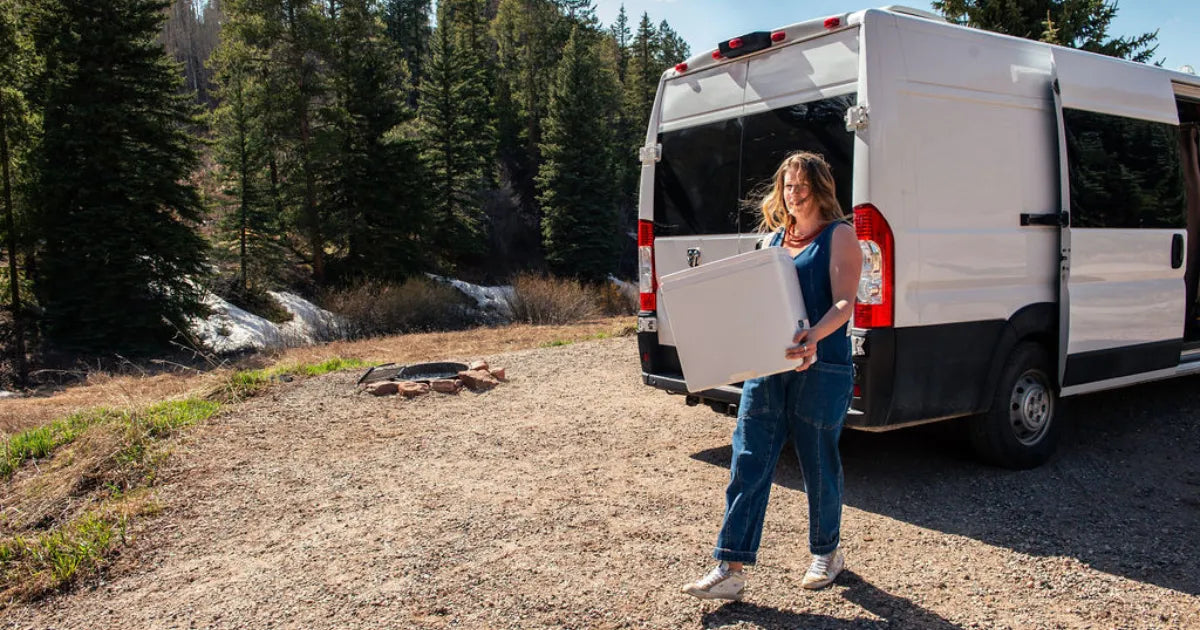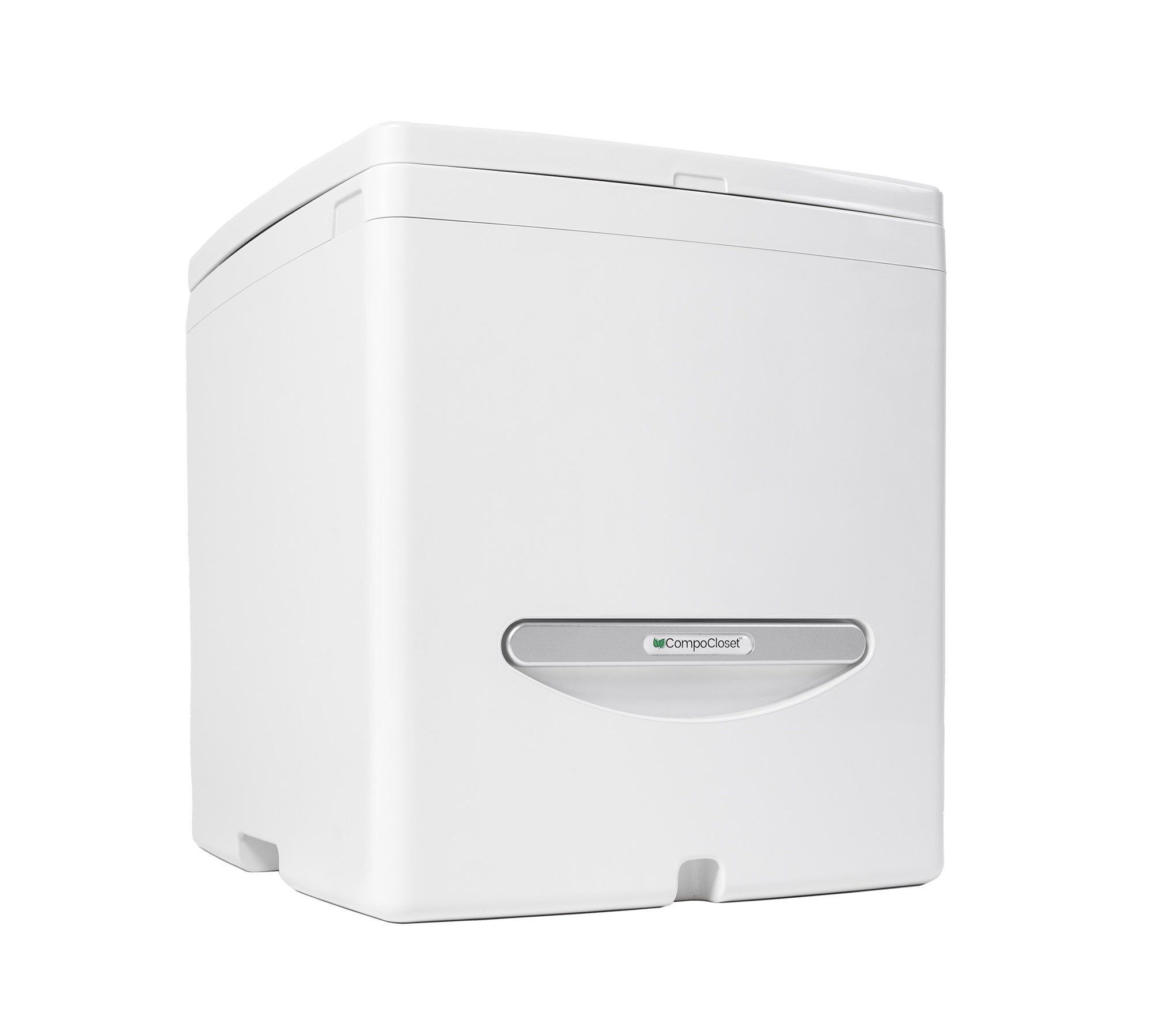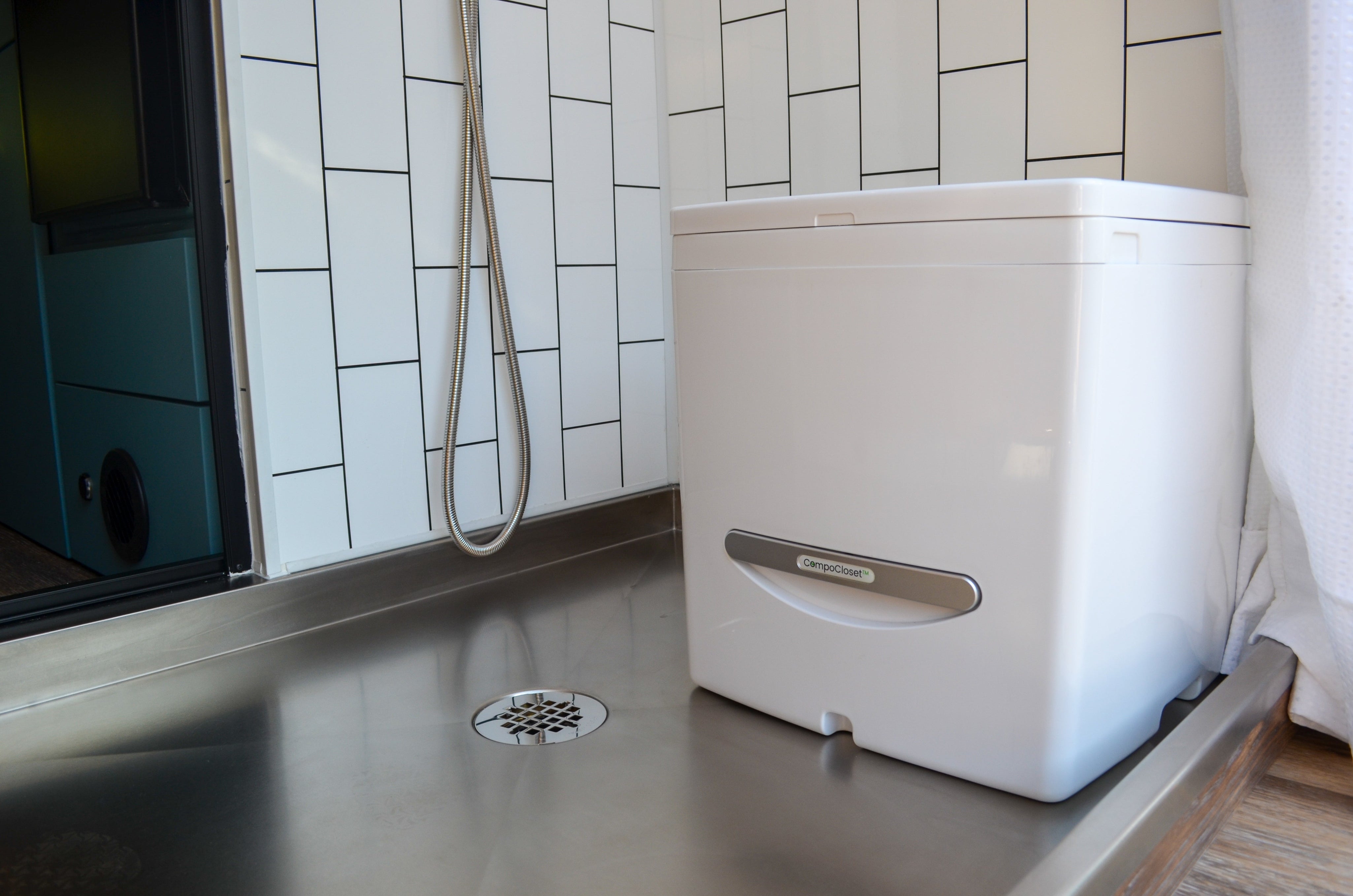Think composting toilets are high maintenance?
Think again! While they do require a bit of regular care, these eco-friendly wonders are far from being fussy. Whether you're a vanlifer, tiny-home dweller, or just an eco-conscious adventurer, understanding how to maintain your composting toilet can make your off-grid experience smoother (and less stinky).
Ready to become a composting toilet master? Let’s flush out the details!
Composting Toilet Basics
What’s a Composting Toilet?
Well the short version is: Imagine a toilet that doesn’t guzzle gallons of water or rely on chemicals. That’s a composting toilet in a nutshell. It separates liquids and solids, turning humanure (yep, that’s a thing!) into nutrient-rich material that can be safely composted over time.
Think of it as a mini ecosystem in your loo, helping the environment one flush-free visit at a time.
Key Benefits:
-
Saves up to 2,500 gallons of water per year (per person!).
-
Reduces waste by starting the decomposition process so you can compost your solids.
-
Perfect for tiny homes, vans, boats, or any off-grid setup.
How Does it Work?
Let’s break it down:
-
Separation: Solids and liquids are diverted into different compartments.
-
Decomposition: Solids break down with the help of aerobic bacteria and microbes.
-
Ventilation: Proper airflow keeps the process odor-free and efficient.
-
Moisture Balance: Too dry? Solids may not start breaking down. Too wet? You’ve got a soggy mess. (Balance is everything!)
Fun Fact: Cuddy’s built-in fan and carbon filter ensure odors don’t crash your composting party. Bonus points for the agitator, which keeps things mixed and happy!
Steps to Maintaining your Composting Toilet
Regular maintenance is essential to keep your composting toilet functioning properly. Following a few simple steps, you can ensure that your composting toilet remains in optimal condition for years.
1. Regular inspection of your portable compost toilet
Inspecting your compost toilet regularly is crucial to identify any potential issues before they become major problems. Take the time to carefully examine the various components of your composting toilet, including the solids bin, liquids bottle, and ventilation system; your small potty may differ, but in Cuddy, this is the internal fan and filter. You can see these clearly in our setup video.During inspection, pay close attention to any signs of wear and tear, leaks, or unusual odors. If you notice any issues, address them promptly to prevent further damage.
2. Cleaning Like a Pro: Keep It Fresh and Friendly
The Essentials:
-
Wipe down the toilet after each use with a vinegar-water spray (5:1 ratio). This eco-friendly cleaner keeps bacteria in check without harming your composting process.
-
For Cuddy, pay attention to the pee chute—liquids can sometimes linger, causing odors. A quick rinse with vinegar does the trick.
-
Rinse the urine bottle regularly. If you’re using Cuddy, its ergonomic design makes this a breeze.
What About the Solids Bin?
Here’s a surprising twist: You don’t need to clean it completely every time. Leaving a little composted material behind acts as a “starter,” speeding up the decomposition process for the next batch.
Managing the solids in a composting toilet
The magic of composting toilets happens in the solids bin, so it’s worth giving it a little extra love. Managing the solids properly is key to successful decomposition and odor control, leading to nutrient-rich compost.
- Bulking Agents: A bulking agent—also known as a compost medium—like coconut coir, sawdust, or sustainable sphagnum peat moss, helps maintain the ideal carbon-to-nitrogen ratio. This balance is crucial for breaking down waste efficiently while keeping foul odors at bay.
If your toilet doesn’t have an agitator, you can use the layering method to keep it happy. sprinkling a thin layer of bulking agent over your waste after each use will help absorb moisture and improve airflow, creating the perfect environment for decomposition.
- Agitation Mixing matters!: If your composting toilet has an agitator, like Cuddy, use it to blend the solids and bulking agent thoroughly. This aerates the compost, prevents clumping, and speeds up the breakdown process—no need to add a bulking agent after every use. That means you use less material, saving both space and money!
- Layering: For toilets without an agitator, like Cuddy Lite, a simple layering method works best. Just sprinkle a layer of bulking agent over the waste each time you go. This helps control moisture and odor while supporting natural decomposition.
Fun Fact: Cuddy’s built-in agitator doesn’t just mix—it maximizes efficiency! By aerating the compost and ensuring even distribution of the bulking agent, it helps waste break down faster and take up less space, so you can go longer between cleanings. Efficiency for the win!
Maintaining the ventilation system
Your small potty may not have an internal ventilation system… but Cuddy has one built inside! The ventilation system – Cuddy’s internal fan and carbon filter – plays a crucial role in the proper functioning of your portable composting toilet. These parts help control moisture levels, prevent odors, and promote the breakdown of organic matter.
Regularly inspect the ventilation system to ensure that it is functioning correctly. If you vent your composting toilet externally, check for blockages or obstructions that impede airflow. If you notice any issues, clean or replace parts as needed.
Cuddy’s internal carbon filter is a literal breath of fresh air. It helps remove any odors that may arise during the composting process. The filter can easily and inexpensively be refilled with aquarium carbon found in most pet stores. You can expect to go 6 months to 1 year before changing the carbon!
Troubleshooting Common Maintenance Issues
Even with the best care, hiccups can happen. Here’s how to tackle common composting toilet conundrums:
Odors: When the Forest Floor Smell Fails
Your toilet shouldn’t smell unpleasant—at most, it might smell like damp earth. If foul odors arise:
-
Check for airflow blockages.
-
Add bulking agents to balance moisture.
-
Replace carbon pellets in the filter.
Quick-Filling Compost Bin
Solids filling up too fast? Here’s what to do:
-
Avoid putting toilet paper in the solids bin. Instead, use a separate trash bin.
-
Mix the solids and bulking agent more frequently to compact the material and create space.
Liquid Overflows
Prevent accidents (and messes) by:
-
Emptying the liquids bottle before it’s full.
-
Choosing a toilet with a full-bottle indicator (like Cuddy’s LED light).
Condensation in the Toilet
Some condensation is normal—it’s a sign the decomposition process is working. Too much?
-
Add bulking material to absorb excess moisture.
-
Stir the contents more frequently.
-
Empty/refresh your solids bin more often.
Top Tips for Maintaining a Happy Composting Toilet
Ready to level up your maintenance game? Here are some pro tips to keep your loo in top shape:
-
Aeration is Everything: Stirring isn’t just for soup—it’s crucial for your solids bin. Regular agitation keeps decomposition on track and odors away.
-
Stay Dry-ish: Balance is key. Excess moisture slows decomposition, but too dry can halt it altogether.
-
Stick to the Rules: Only put human waste in the toilet. No food scraps, hygiene products, or non-biodegradable items.
-
Toilet Paper Tactics: Use a separate bin for toilet paper to maximize compost bin space and speed up the breakdown process.
-
Fly Kryptonite: Sprinkle diatomaceous earth in the bin to ward off fruit flies or Black Soldier flies.
-
Vinegar to the Rescue: Keep a spray bottle handy for quick clean-ups and odor control.
Proper Composting Toilet Maintenance = Happy 💩
There you have it—your ultimate guide to composting toilet maintenance! By following these tips, your composting toilet will stay clean, efficient, and odor-free, making your sustainable lifestyle even more enjoyable.
Whether you’re on the road, on the water, or simply embracing off-grid living, a well-maintained composting toilet is your best companion.
Want to learn more about how Cuddy can enhance your toilet experience? Check out Cuddy, the portable composting toilet designed with care, convenience, and the environment in mind.






